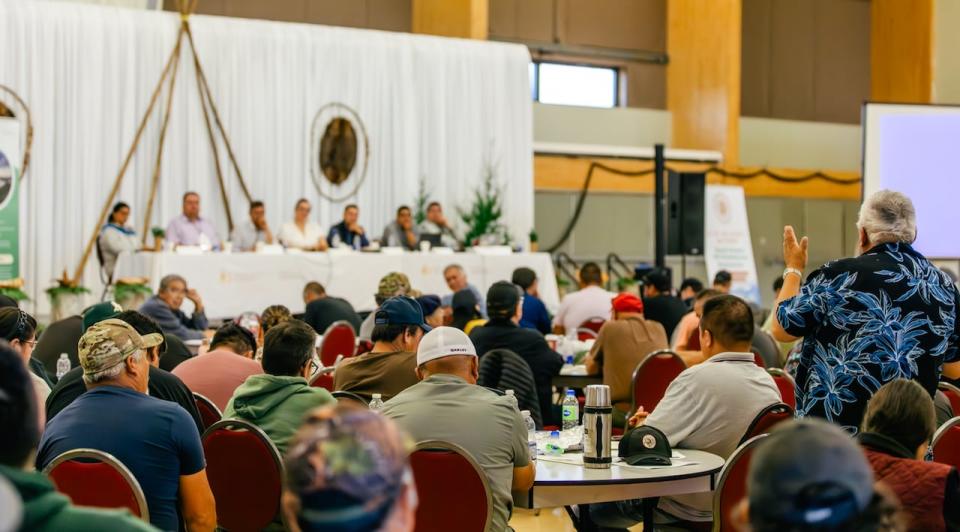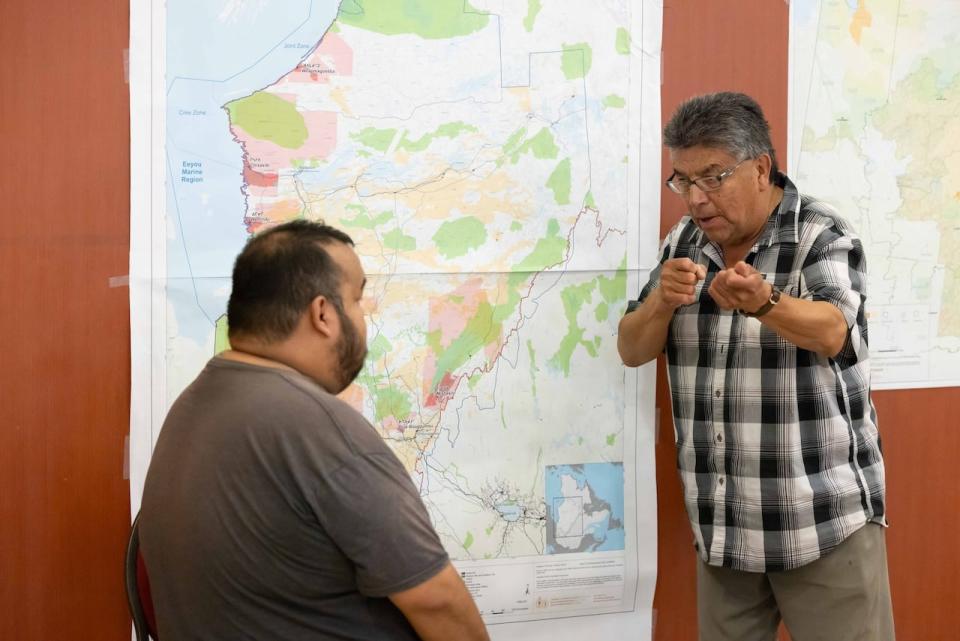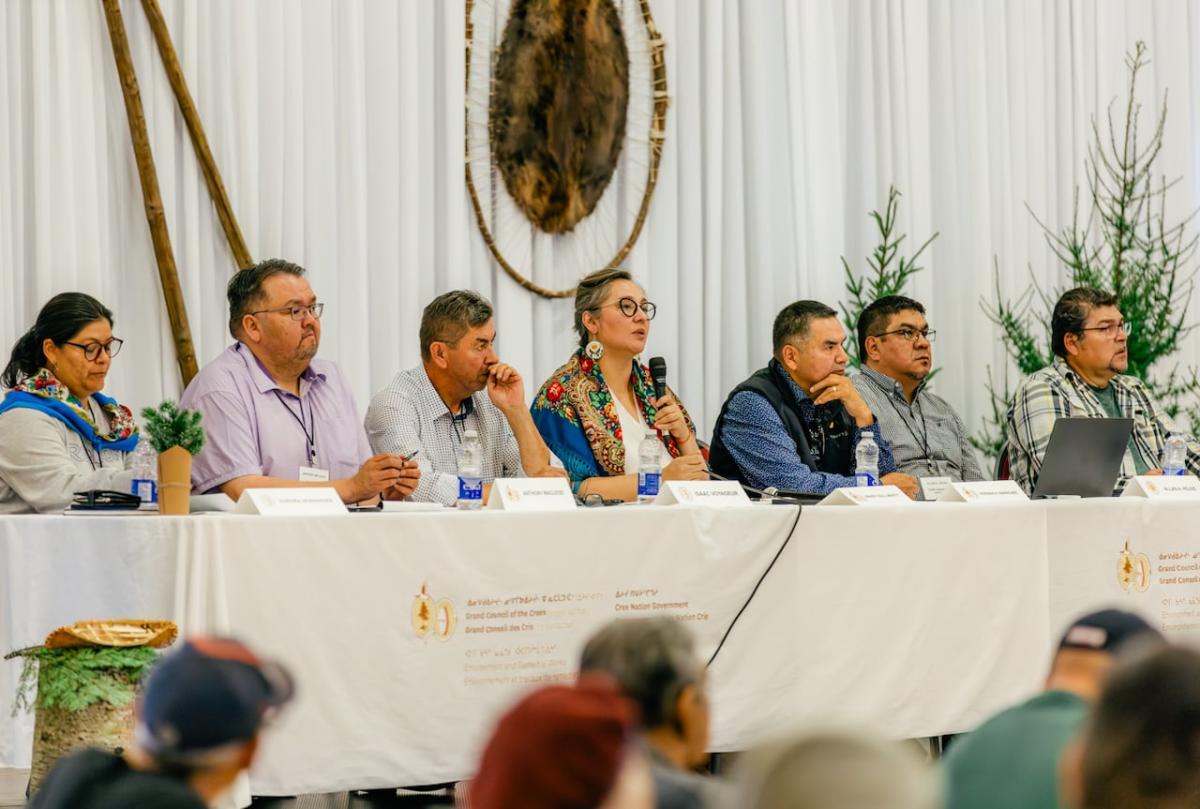How development happens in Cree communities and who benefits was front and centre at a recent meeting between Cree leaders and many hunters, trappers and land users from the inland communities in northern Quebec.
Close to 300 hunters and tallymen, as traditional land users are called in Quebec, were registered for the meeting that happened in Mistissini last week, but organizers say closer to 500 were in the room.
“The meeting for me was a real eye-opening experience,” said Mandy Gull-Masty, the grand chief of the Cree nation in northern Quebec.
“We had such a high level of participation, there was so much engagement.”
The Cree Nation Government, along with the Cree Trappers Association organized and hosted the meeting.
Wide range of opinions
It was held after a group of concerned land users openly criticized their local and regional leaders and demanded more transparency and involvement in how development happens in Eeyou Istchee. Eeyou Istchee is the traditional name for the Cree territory in northern Quebec.
The group of land users said they were living with all the negative consequences of mining and exploration, but getting few, if any, of the benefits. Some of those tallymen attended the Sep. 16 meeting.
Gull-Masty said there was an important and wide range of opinions expressed.
“From a desire to have greater conservation of their trapline … all the way to requesting better mechanisms to support them in being part of mining development processes — having contracts, having employment, having training, etcetera,” she said, adding that it will be an interesting process to find solutions for everyone.

Organizers say close to 500 land users from the inland communities attended the meeting last week. Another meeting will be organized for tallymen from the coastal Cree communities. (Saganash Photography/ James Saganash)
Only “one in a thousand” mining claims actually yield a resource deposit, according to Gull-Masty.
The meeting was also a chance to explain how development is supposed to work in Eeyou Istchee, she added.
“Cree rights are collective rights. That means when a mining company comes, they are legally obliged to consult with the community. This is the legal body that represents the community in its entirety. As part of that, the community has the responsibility to work with the impacted family members … and the tallymen,” said Gull-Masty.
Tallymen and their families are also supposed to have preferred status, and be given the opportunity for training and to bid on contracts relating to a mine.


Cree officials say the meeting was the beginning of a process to clarify Cree priorities in the face of development. (Cree Nation Government/ Brendan Forward)
Gull-Masty said there were 44 key messages that she took out of the exchange with land users, adding this is the beginning of a process to clarify Cree priorities on the territory.
She said the Cree Nation Government needs to better inform both land users of their rights and mining companies about Cree rights stemming from the James Bay and Northern Quebec Agreement (JBNQA). That agreement is a treaty signed with Quebec and Canada in 1975.
“[The] Cree nation is the only nation that has the capacity to do that in all of Quebec and I think even in all of Canada. It’s a very unique structure that exists only within the JBNQA,” said Gull-Masty.
A report on the Sep. 16 meeting will be produced and another meeting will be organized to consult with land users from the coastal Cree communities.

